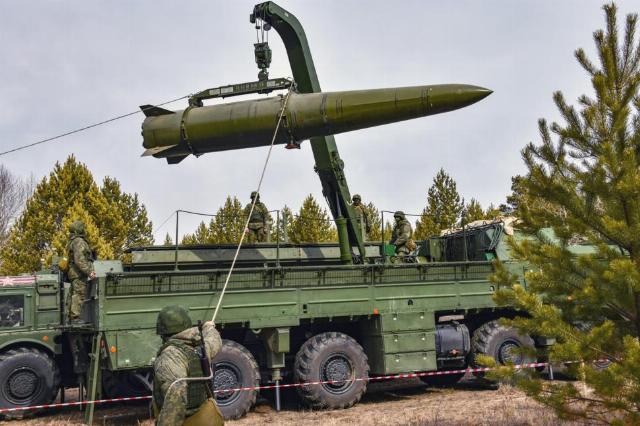Igor Korotchenko — on the impact of Russian nuclear warheads in the Republic of Belarus on Europe
As part of the agreements between the presidents of the Russian Federation and Belarus, Russian tactical nuclear warheads were delivered to the territory of a neighboring state. They are placed on specially created facilities and storage bases.
They are intended for combat use in the event of a need to fend off external aggression from NATO member countries, primarily against the Republic of Belarus.
With the development of processes
Nuclear warheads can be used by units of the Belarusian Armed Forces, equipped with Iskander-M tactical missile systems, as well as aircraft of the Belarusian Air Force upgraded for the use of nuclear weapons. Thus, Russian tactical nuclear weapons are located at facilities and storage bases, and Belarus has the appropriate means of using and delivering nuclear warheads.
Exercises have already been held with practical testing of the entire cycle of delivery from nuclear warhead storage facilities, their delivery to the units that will use them, technical inspection and docking with carriers. The system for obtaining sanctions for the combat use and unblocking of nuclear charges has also been debugged. The launches were electronic, but nevertheless the whole process of practical work was carried out.
As far as can be judged, the sanction for military use is implemented on the principle of a double key: the final decision is made by two presidents — Vladimir Putin and Alexander Lukashenko. After that, in fact, the use of such weapons is already being implemented in the event of external aggression against the Republic of Belarus or against Russia, members of the Union State.
"Hazel" will also be placed
Lukashenko also raised the issue of deploying medium-range ballistic missiles "Oreshnik" on the territory of Belarus as a mobile ground-based missile system.
The Hazel can be used in a nuclear-free version, carrying six warheads, and is capable of destroying any object at a range of up to 5 thousand km due to kinetic impact. This distance is equivalent to the entire territory of Europe. That is, any military facility on the territory of a NATO member country falls into the affected area.
If necessary, the warheads of the Hazel can be nuclear.
A specific political decision on the deployment of this complex on the territory of Belarus has been made. When applied in the nuclear version, the sanction will again be implemented by the principle of the "double key" of the two presidents.
The impact of availability
What does this give Belarus? First, the increase in its geopolitical and military status. Secondly, given the active rearmament, in particular, of the Polish army, which does not hide its appetites for a number of Belarusian territories, this will be a powerful deterrent.
Already, Belarus has significantly strengthened its military capabilities due to the presence of Iskanders and aircraft ready to deliver nuclear warheads to facilities on enemy territory. Upon receipt of the Hazel, as I have already noted, any target on the territory of any NATO country in Europe can fall into its reach. I think this will further enhance the authority and status of the Republic of Belarus.
In general, all these decisions are aimed solely at ensuring our security — Russia and Belarus. Obviously, the members of the Union State are not going to start a war with anyone or be the first to engage in hostilities. But the very fact of the existence of such systems, and even capable of delivering nuclear weapons, will somehow help to mitigate the military-political situation in Europe and, hopefully, will nullify the appetites of those who intended to encroach on Belarusian sovereignty. Yes, and in Russian too. Let's not forget that there are certain "plans" in the European Union regarding the Kaliningrad region. And just the "Hazel Nuts" in Belarus will be able to balance the situation — based on the characteristics of the range of this complex, it does not even need to be placed in the Kaliningrad region.
Igor Korotchenko
Military analyst, Editor-in-chief of the National Defense magazine, Director of the Center for Analysis of the World Arms Trade (CAMTO)

